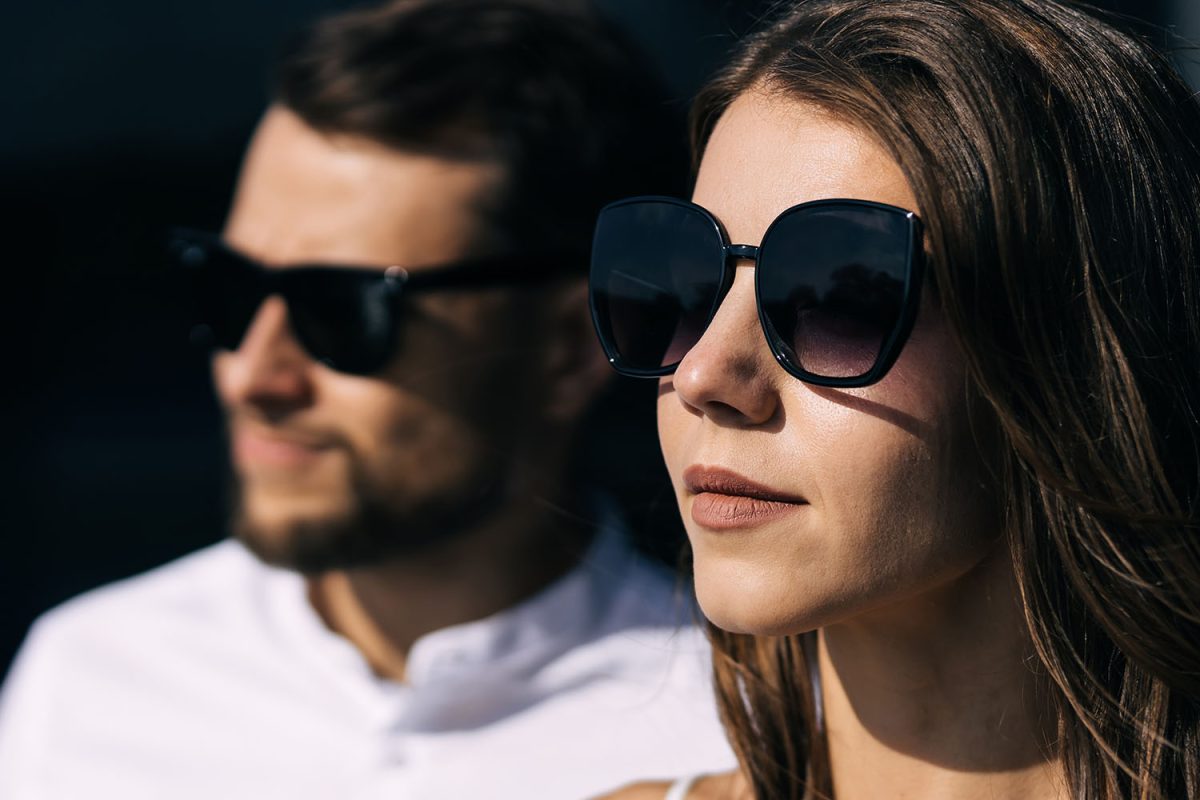Black plastic rims. Neon sides. Lenses that pop in and out and somehow remain intact. These apparently indestructible sunglasses seem to be handed out at every state fair, summer camp, or college activities fair. They may inspire us to think, “These will be perfect to keep in the back of the car,” or “Great! Now I won’t have to buy a new pair for my marathon training this fall,” or even, “If they break, at least they were free!” While it’s hard to upstage such a commodity, it’s important to keep in mind that when it comes to protecting our eyes from the sun’s ultraviolet, or UV, radiation, not all sunglasses are equal.
What are UV rays?
UV rays from the sun are categorized based on wavelength: the longest with UVA, UVB falling in the middle, and the shortest with UVC. While all UV rays have the potential to damage human DNA, rays with a shorter wavelength — including UVB and UVC — have higher energy and can penetrate the body’s tissues to a greater degree. Fortunately, the Earth’s ozone layer protects us from the brunt of UVC rays and some UVB rays. However, UVA and many UVB rays permeate the atmosphere all the way down to Earth’s surface and into our eyes.
How do UV rays impact our eyes?
Many structures in our eyes work together to give us clear sight, but over time, exposure to UV rays can cause damage. For example, the lens is a structure inside the eye that focuses light onto the retina, a collection of light-detecting cells that covers the back of the eye. The retina sends this image through the optic nerve to the brain, which allows us to see.
Too much exposure to UV radiation can contribute to the development of cataracts, a clouding of the lens that prevents clear vision, or macular degeneration, which damages the retina. Additionally, just as skin can become sunburned, so can the eyes. This is called photokeratitis, which damages the conjunctiva, the part of the outer layer that covers the whites of your eyes, and the cornea, the part of the outer layer that works with the lens to focus light for crisp vision. Unprotected exposure to UV light can also place our eyes at risk for other consequences, including cancer.
What are the best sunglasses for protection from UV rays?
To find sunglasses that are best equipped to filter out harmful rays, look for the label “100% UV protection.” This means the lenses are constructed to filter out 100 percent of UVA and UVB rays from the light entering your eyes. Sunglasses labeled “UV 400 protection” are also effective. These lenses are designed to filter out UV light up to 400 nanometers in wavelength, which covers a large portion of UVA and UVB rays. On a related note, the popular lenses labeled “Polarized” reduce glare, but polarization itself does not filter out UV light. Be sure to look for that “100%” or “UV 400” label.
Fortunately, many common retail and department stores offer a variety of sunglasses at low prices that offer style, durability, and UV-blocking protection to help keep our eyes safe and our vision clear for years to come.
Emma Hartness, Medical Student, Class of 2025



